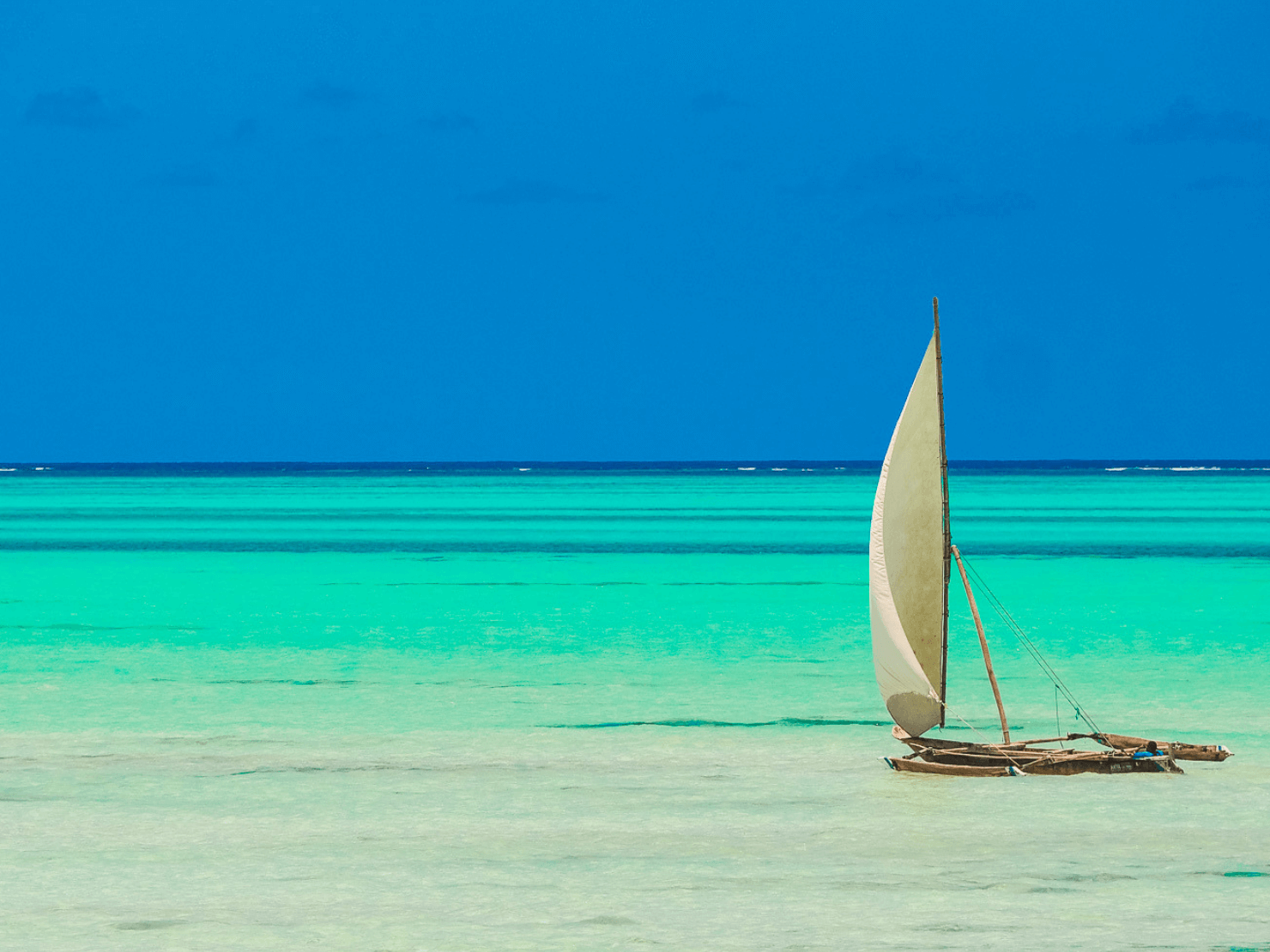I’ve been backpacking Zanzibar on a budget many times over the last 11 years. It’s one of my favourite places in Africa and I love taking my Rock My Adventure tour groups there and showing them just how magical it really is!
A lot of people think of Zanzibar as a honeymoon or romantic couples destination, but it is also a great place for budget backpackers and solo travellers too! Plus there are loads of amazing things to do in Zanzibar, so you won’t get bored – it’s not all about just lying on a beach (although you can totally just do that if that’s what you need).
I usually divide my time with a few days in Stone Town, followed by a few days at the beach resorts. Some people stay in one place, but this would mean quite a bit of driving around, so I’d definitely recommend splitting your time.
Zanzibar isn’t actually an island, it’s an archipelago that lies in the Indian Ocean, off the coast of Tanzania. There are 3 main islands called Unguja, Pemba and Mafia, plus a number of smaller islands. Unguja is the largest island, where you will find the capital Zanzibar City (more commonly referred to as Stone Town – which is an area of Zanzibar City) and is what most people mean when they refer to Zanzibar. Pemba is north of Unguja and Mafia is to the south, near Mozambique.
Backpacking Zanzibar is fun always makes a nice break during any longer Africa backpacking trip, especially after you’ve been on safari in the Serengeti or climbed Mount Kilimanjaro. It’s more expensive than mainland Tanzania, but there are plenty of ways to visit Zanzibar on a budget.
So here are my essential travel tips to help you plan your own Zanzibar adventure, including when to go, what to do, where to stay, where to eat and where to meet other travellers!
For the purpose of this guide, when I talk about Zanzibar, I am referring to the main island, Unguja.
I first wrote this post in 2017 and it has been updated for 2021.
Backpacking Zanzibar on a Budget: Everything You Need to Know
Weather
June to October is generally the best time to visit when it’s cooler (but still pretty hot) and dry. January and February are also good, when it’s hot and dry (but a little bit more humid).
March to May sees the long rains. November and December have short rains. The short rains aren’t so bad and there will be sun, but it does get very humid and you need to be prepared to spend some time sheltering indoors. On the plus side, you can often get good deals on hotels in the low season.
I have visited during the short rains (in November) and it was fine but again, pretty humid, but I would probably avoid March to May personally. I prefer it when it’s dry! But of course, it is a tropical island so it can rain any time of year.
If you’re also planning to visit Kenya or mainland Tanzania for safari or to climb Kilimanjaro, you might want to have a read of this guide to help you decide when and where you want to go.
Ramadan
During Ramadan quite a few of the restaurants in Stone Town shut down during daylight hours and some close all together, but you will be able to find food.
Most of the beach resorts will operate as normal, however you must observe Ramadan etiquette everywhere else.
You shouldn’t drink, eat or smoke on the streets and ladies should keep covered (see the What to Wear section below).
Don’t forget to greet people with ‘Ramadan Kareem’ – they will really appreciate it!
Eid
If you do go for Ramadan, consider staying on for Siku Kuu (Eid al-Fitr), a 4-day celebration, an exciting time to be in Zanzibar, when everyone convenes at Forodhani Gardens, dressed in their finest and in holiday mode, spending time with friends and family.
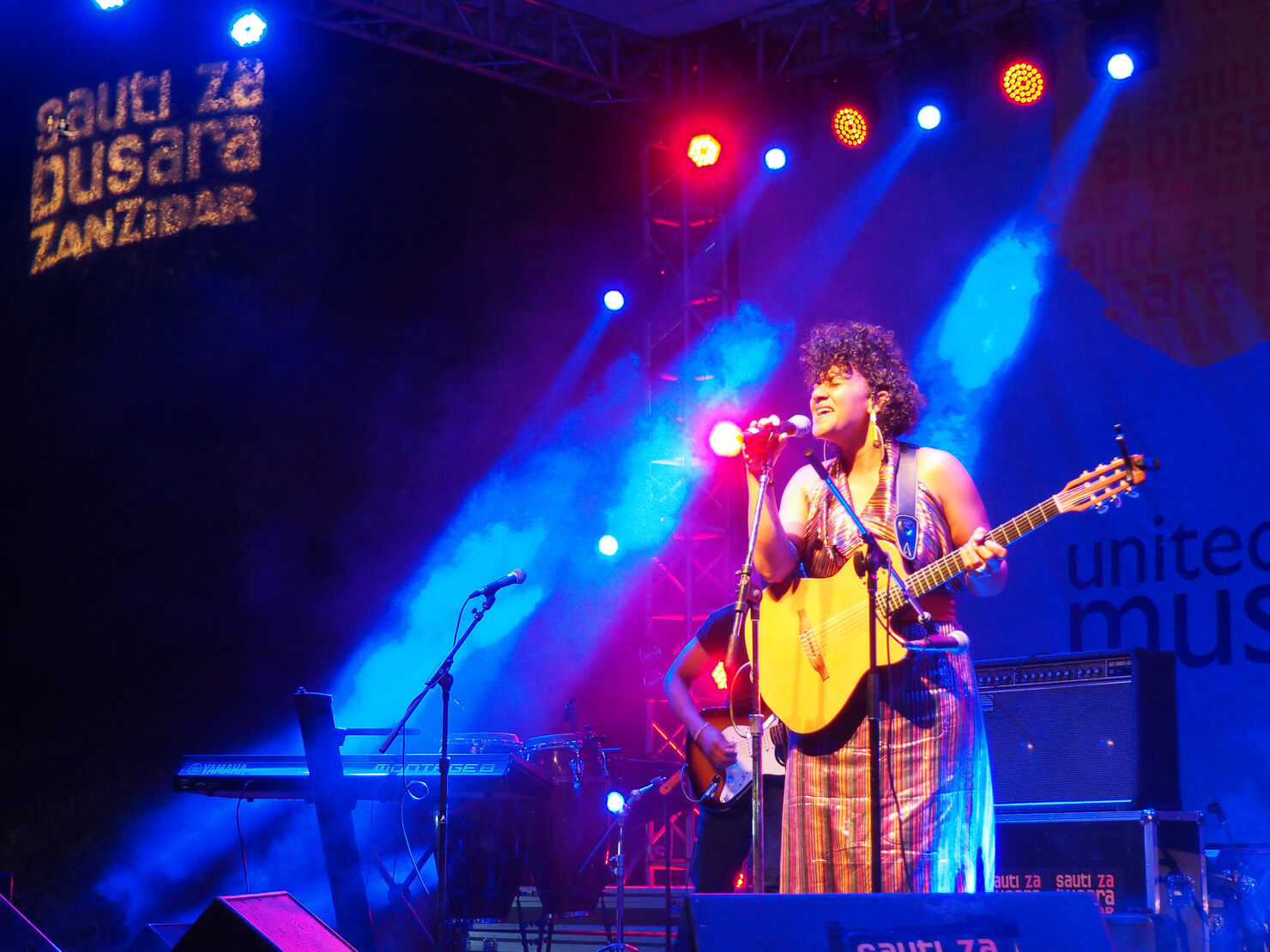
Festivals
If festivals are your thing, the Sauti za Busara (Sounds of Wisdom) takes place (almost) every February. I went a couple of years ago and it was fantastic.
The Zanzibar International Film Festival takes place in July and the Zanzibar Watersports Festival takes place in September.
Kitesurfing
If you’re into kite surfing, the best months to visit are January, February, June, July and August as they are the months when the famous trade winds blow.
Between June to September, the Kusi winds blow from the south and between December to February the Kaskazi winds blow from the north.
Scuba Diving
You can go scuba diving in Zanzibar all year round, but the best times for visibility tend to be between June to October in the north and November to March in the south.
March to May is generally the worst time for visibility due to the more rainy weather, but it can depend on the day.
I’m not a diver but one of my readers recommended Scubafish and diving in Matemwe – thanks Lily! The Mnemba Atoll is probably the most famous dive spot in Zanzibar.
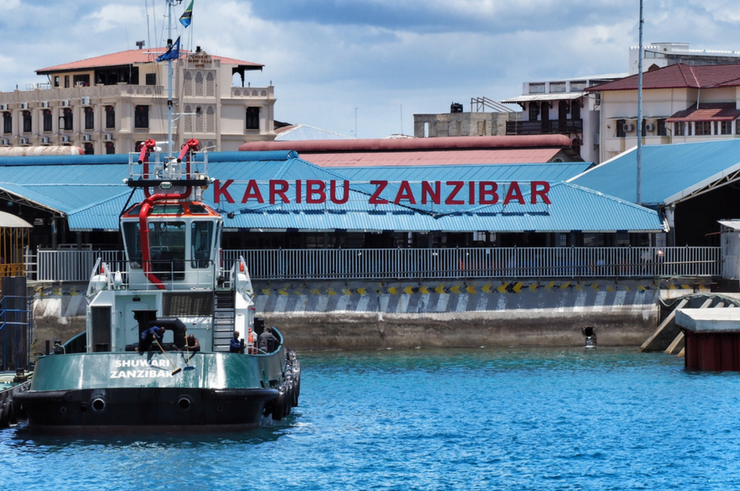
By Sea
Usually, the cheapest way to get to Zanzibar is by ferry and Azam Marine ferries are the company I recommend. there are other ferries, but they are slower and not viewed as safe as Azam.
The ferries run between Dar es Salaam and Stone Town and the journey takes approximately 2 – 2.5 hours. Ferries depart at 7am, 9.30am, 12.30pm and 3.45 pm in both directions (from Stone Town and Dar es Salaam).
The ferry costs around $35 (one way) for an adult economy class ticket. Make sure you buy your ticket from the official ticket office, not from touts on the street. If you can buy your ticket in advance, I would advise you to do so as they often fill up. I have on a few occasions had to wait a few hours because the next ferry was full.
You need to show your passport when buying your tickets. If an agent is getting your tickets, they’ll usually need a picture of your passport details.
For all the info, take a look at the complete guide to taking the Dar es Salaam to Zanzibar ferry.
You can also sail to Zanzibar from Bagamoyo. The ferry doesn’t run every day, but it does run frequently and is safe and reliable and a similar price to the Dar – Zanzibar ferry, but without the cost of getting to and navigating through Dar es Salaam. Book through Firefly hostel.
By Air
You can fly into Zanzibar from most domestic airports, including Kilimanjaro, Arusha and Dar es Salaam and the airstrips in the national parks.
There are also a number of international airlines that fly to Zanzibar, usually via Europe, the Middle East or elsewhere in Africa (like Nairobi, Kilimanjaro, Addis Ababa, Dar es Salaam or Johannesburg).
These include; Kenya Airways, Etihad Airways, Ethiopian Airlines, Turkish Airlines, Qatar Airways and Mango Airlines. From Dar-es-Salaam, the journey takes around 15/20 minutes.
I always use Skyscanner to book my flights. As of December 2020, one-way flights from Dar es Salaam to Zanzibar are between $35 – $65.
Getting To and From Pemba & Mafia Island
Ferries from Stone Town to Pemba Island run on Wednesdays and Saturdays and do the return journey on Thursdays and Sundays. You can fly to Pemba from Zanzibar, Arusha, Tanga and Dar es Salaam.
The quickest and easiest way to get to Mafia Island is to fly with either Coastal Air, Tropical Air or Auric Air, but flights leave from Dar es Salaam, not Zanzibar. You can also get the ferry from Nyamasati, which is around 4 hours south of Dar es Salaam.
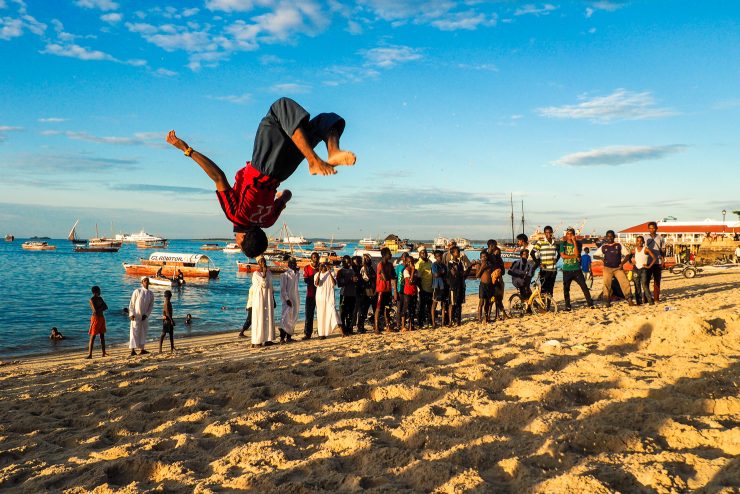
Tanzania Visa
Zanzibar is part of Tanzania, so if you’re flying straight into Zanzibar you’ll get your Tanzania visa there, this will cover you if you go to the mainland too and vice versa.
Some nationalities are exempt from visas, but for most people, they cost $50 for a single entry, or if you’re American your visa is $100 but it’s automatically a multi-entry visa.
Some nationalities can buy visas on arrival and some have to apply in advance, so check before you attempt to enter.
READ MORE: How to Get Your Tanzania Visa & Entry Requirements Explained
Yellow Fever
The rules around Yellow Fever certificates can be a bit tricky, so I’ve written a whole post dedicated to whether you need a Yellow Fever vaccination for Africa, so maybe have a quick read of that if you are travelling to multiple countries.
However, for Tanzania and Zanzibar only, if you’re flying in from places without a Yellow Fever risk (Europe, USA etc), you shouldn’t need a Yellow Fever certificate. But if you are transitting through a country with a risk of Yellow Fever (Kenya, Ethiopia) for more than 12 hours – sometimes less, they may ask for it.
You can find a list of countries with a risk of Yellow Fever here.
If travelling by ferry from mainland Tanzania, you shouldn’t be asked for your Yellow Fever certificate unless a) you have transited through a Yellow Fever risk country for more than 12 hours or b) you have recently visited a country that poses a risk. But they may well ask for it and I think sometimes it depends on who is on duty.
Last time I flew into Zanzibar, I met some Zambians, who were living in Abu Dhabi (not a risk zone) who were made to get a shot on arrival in Dar es Salaam. Where as none of the Europeans were asked to, even without certificates.
If you are travelling long term in Africa and visiting multiple countries, having a Yellow Fever certificate is pretty handy (and often required) so regardless, I’m glad I have it. Plus, the vaccination lasts for life now.
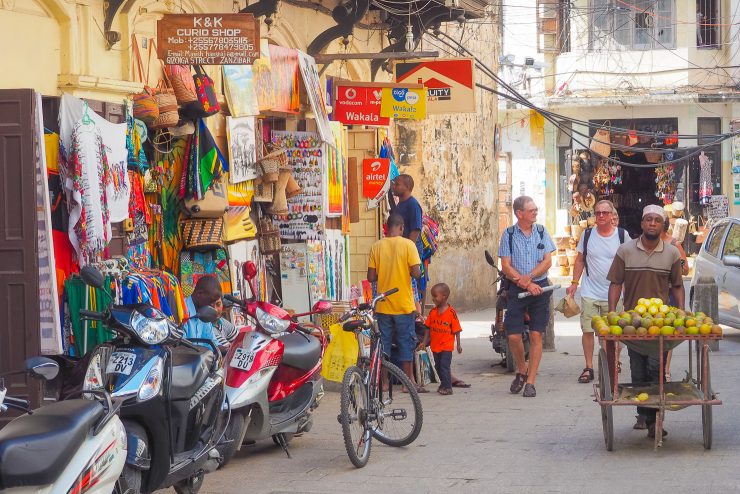
Arriving By Ferry
When you get onto the ferry in Dar es Salaam, you’ll be asked to place your large bag in a cage that gets locked. Don’t worry, this is normal! Just remember where your bag is and what cage so you can be ready to pick it up at the end.
The ferry itself is fun. I recommend standing outside as it always helps me feel less seasick and you may also spot dolphins. I once saw a pod of about 30 on the way over.
Arriving at the ferry port in Stone Town can be a little overwhelming. When you get off the ferry, head straight for the walkway and head towards the terminal. Get in the passport queue first, but keep an eye on the cages and try to spot your bag. Once you’ve had your passport stamped, collect your bags and head out of…

